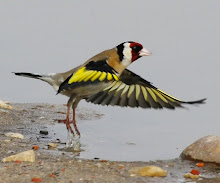
Some of the most moving, beautiful, and touching music has been written for Christmas carols. Many christmas songs and carols have become part of our culture, whether one is religious or not.
And since there are so many good carols, it is difficult to chose a "favorite" one. Still, I will mention one of my favorites: Es ist ein' Ros' entsprungen, or, as it is usually known in english, Lo, How a Rose E'er Blooming. For my greek friends, there is no commonly used translation: this is not one of the carols that have become known in Greece, despite the fact that many other western carols are as popular in Greece as in any other country.
Es ist ein' Ros' entsprungen was originally a german chorale, and it probably originates in the middle ages. Michael Praetorius wrote the most commonly used harmonization in 1609. (Look up any hymnal and his name is prominently featured - he wrote many of the hymns that are used up to this day). It is not one of the "top 10" carols, but it is pretty commonly heard in german and english/american churches and carol services. Here is a nice rendition by the Regensburg Cathedral Choir.


One of the most interesting and beautiful settings of this chorale was written by Brahms. It is the eighth of his Eleven Chorale Preludes for organ, op. 122, composed in 1896 but published in 1902, after he had died. These were Brahms's last compositions (poignantly, the very last one is the chorale prelude O Welt, ich muss dich lassen, "Oh world, I must leave you now"...).
It is written just for the manual, and thus can be easily played on the piano too. It is a very unusual chorale, as the melody is rather hidden, alternating between the voices and played on the weak beat, becoming rather difficult to discern. The whole effect is sweet and romantic, and a little bit sad I think. It is one of the most cherished pieces of the organ repertoire.
Eleven Chorale Preludes (1896, Published 1902), Op.122: Es Ist Ein Ros Entsprungen, played by Peter Hurford
I first heard the Brahms setting when I was a child, on BBC short wave radio, and I was immediately captivated by it. Many years later, it was the first organ piece that I learned to play (and one of the very few), at the Bigelow chapel of Mt. Auburn cemetery in Cambridge, MA. The organist there let me practice on Tuesday evenings, when the chapel was not in use. He had even given me a key to the place - to a greek, 20-year old kid he had never seen before! God bless him!
Busoni wrote piano transcriptions for six of the Brahms chorale preludes, including Es ist ein' Ros' entsprungen. These are less known than his famous Bach transcriptions, but they are certainly worth checking out.
Merry Christmas!



































%3DP1040673.jpg)












